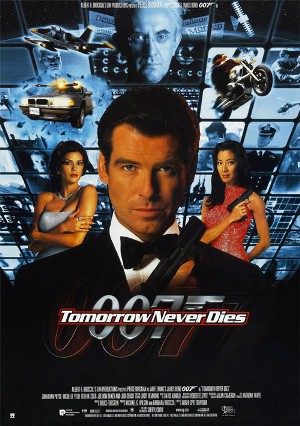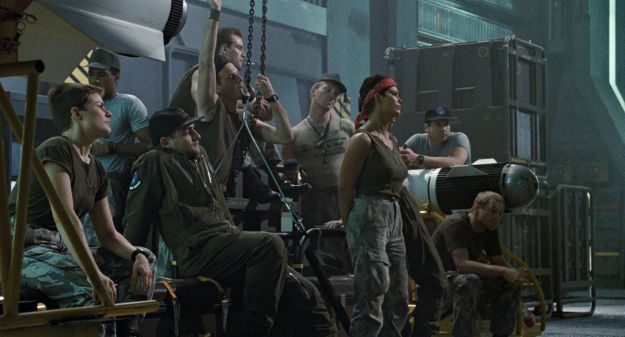
AS THE JUGGERNAUT Marvel Cinematic Universe wraps up its “Phase Three”, bids farewell to some of its most beloved characters, and moves on to new, weird films with titles no-one could possibly like, other attempts at recreating Marvel’s obvious yet surprisingly difficult formula/business model continue to fall behind.
The DCEU movies continue to be allowed to stumble on whenever something like David F. Sandberg’s Shazam! generates good reviews*; Sony are working on their second doomed attempt to build a cinematic universe solely based on characters from the pages of Spider-Man; perpetual losers Sony also tried to build a universe around Ghostbusters – you know, that charming standalone comedy from 1984, the one that was pretty much played out by the time of its first sequel.
And Universal, having built the first cinematic universe back in 1943 when they created Frankenstein Meets the Wolf Man – and in later films added Dracula and The Invisible Man to the mix – tried to channel new life into some dead properties by announcing the Dark Universe. Predictably, everyone hated the name and, after much wasted money on marketing, the whole universe was cancelled after one bad movie, The Mummy.
Universal’s had a long and interesting history with these characters. Every time they come up, the assumption seems to be that they’ve been dormant since the 1940s. This is not entirely accurate. Universal made their very first horror film in 1913, Dr. Jekyll and Mr. Hyde, but the earliest film they retroactively branded as a “Universal Horror” was 1923’s The Hunchback of Notre Dame. A number of silent, German Expressionist-influenced silent pictures followed before the huge sound successes of Dracula and Frankenstein in 1931. The Mummy, The Invisible Man, Bride of Frankenstein and Dracula’s Daughter, among many others, followed in the next few years and, in 1939, Son of Frankenstein re-invigorated the series once again. At that point, Universal’s business model shifted to cranking out cheap sequels of varying quality and, in time, crossovers became inevitable. In 1948 the original incarnations of Dracula, Frankenstein’s Monster and the Wolf Man had their last hurrah in the comedy vehicle Abbott and Costello Meet Frankenstein. Abott and Costello went on to encounter The Invisible Man, Jekyll & Hyde and The Mummy, all while standalone horrors continued to be produced at a rate of 2 or 3 a year until 1960.
In 1957 – while the original Universal Horror franchise was still running – Hammer released The Curse of Frankenstein, starring Peter Cushing as the creator and Christopher Lee as the monster. There had, of course, already been other takes on Frankenstein, Dracula and the other Gothic classics, but Hammer’s had a semiofficial Universal seal of approval, often distributed by them and sometimes using Universal-owned elements. Horror of Frankenstein and The Mummy rounded out Hammer’s Universal stable, and Frankenstein and Dracula sequels kept appearing until 1974.
In 1979, John Badham directed Frank Langella in a classy, moody Dracula, but unlike previous revivals, it led to no further monster activity until 1987’s The Monster Squad, a charming comedy in the style of Gremlins or Ghostbusters** featuring Dracula resurrecting Frankenstein’s Monster, the Wolf Man, the Mummy and the Gill Man (The Creature from the Black Lagoon) to cause family-friendly mischief. Universal licenced the character rights but not their familiar appearances, meaning the film features handsomely realised and almost-familiar versions of the classic monsters. For TV, Universal coproduced House of Frankenstein with NBC. Billed as a remake of the 1944 film, in practice it was nothing of the sort, but it did feature Frankenstein’s Monster alongside a generic vampire and werewolf.
Then in 1999, Stephen Sommers’ remake of The Mummy, trading Gothic mood for action-adventure spectacle, kicked off a flurry of monster activity. It had two sequels, the first of which, The Mummy Returns, generated its own spinoff, The Scorpion King. The Scorpion King was a prequel to the prologue scene of The Mummy Returns, and itself generated one prequel and three sequels. Van Helsing, also by Sommers, featured Jekyll & Hyde, Dracula, Frankenstein’s Monster, the Brides of Dracula and a number of werewolves in an overstuffed, feature-length trailer that made Sommers’ Mummy look restrained. It was preceded by an animesque half-hour straight-to-DVD prologue, Van Helsing: The London Assignment. The best of the third-millennium Universal monster movies thus far has been 2010’s The Wolf Man which, despite another overstuffed narrative, at least aims for Gothic chills and not action-movie thrills. 2014’s Dracula Untold, conceived as a standalone blending Bram Stoker’s fictional Count Dracula with history’s 15th-Century tyrant/liberator, Vlad Dracula, was retooled by executives into the first Dark Universe movie, then retconned out of continuity after its (deserved) box-office flop. Which brings us to the 2017 Mummy, which also brings in Jekyll/Hyde as a main character and features brief nods to Dracula and Gill Man. A tedious, too-dark-to-see special-effects rollercoaster that’s too dark and strange for the Summer blockbuster crowd but far too much a blockbuster for the horror crowd, it was another well-deserved flop that actually had little to do with classic Universal mythology***. Amusingly, it was even lapped by the previous set of Mummy pictures, when The Scorpion King: Book of Souls, the fourth sequel to the prequel to the prologue of the sequel to the second remake of the original, appeared in 2018. And there may well be more straight-to-DVD Scorpion Kings coming. Someone’s clearly watching them.
As for the Dark Universe, a Bride of Frankenstein remake, that would have come out without a Frankenstein to sequelise, has been cancelled, while a Johnny Depp-starring Invisible Man has been completely retooled into a far more exciting Leigh Whannel-directed Blumhouse co-production. Dependent on its success, Universal may revert to their 1940s model and churn out low-budget but basically satisfying revisions of their old material. Ultimately, the saddest part of the whole thing is how many interesting takes on these characters Universal has rejected in favour of pursuing bid-budget action movies. Guillermo del Toro’s The Shape of Water was the best Creature from the Black Lagoon ever made, and it grew out of del Toro’s desire to do an official Creature movie. why Universal didn’t sue is beyond me, but one can’t help but be glad they didn’t. Over the years, George Romero, Clive Barker, Joe Dante and others have been denied the opportunity to develop takes on Universal’s properties.
Without even touching on the hundreds of non-Universal-approved takes on these characters, the longest Universal themselves have ever let them lie silent in their graves is 10 years, from The Monster Squad to House of Frankenstein. And the odds are that these undead monsters will simply continue to live, well beyond their natural lifespans. Remember, Frankenstein was well over a hundred years old when Universal made their first adaptation.
*Interesting note: Sandberg’s clever, low-budget horror Lights Out is a DCEU movie by virtue of one of its characters reappearing in Shazam!
**I call these “charmedies”, where the humour doesn’t necessarily come from being laugh-out-loud funny, just very charming. They were particularly popular in the 80s and often feature pastichey takes on comic-book and matinée-movie fantasy; other examples include The Blues Brothers, Back to the Future, The Goonies and Bill & Ted.
***Its rather fetching Sofia Boutella Mummy was not the Imhotep featured in the 1932 and 1999 Mummy films, nor Kharis who featured in the 1940s Mummy sequels, the Abbot and Costello vehicle and the Hammer version, but an original Mummy, while Jekyll/Hyde has never been counted among the classic monsters line-up, despite being granted occasional appearances such as in Abbott and Costello Meet Dr. Jekyll & Mr. Hyde and Van Helsing.




